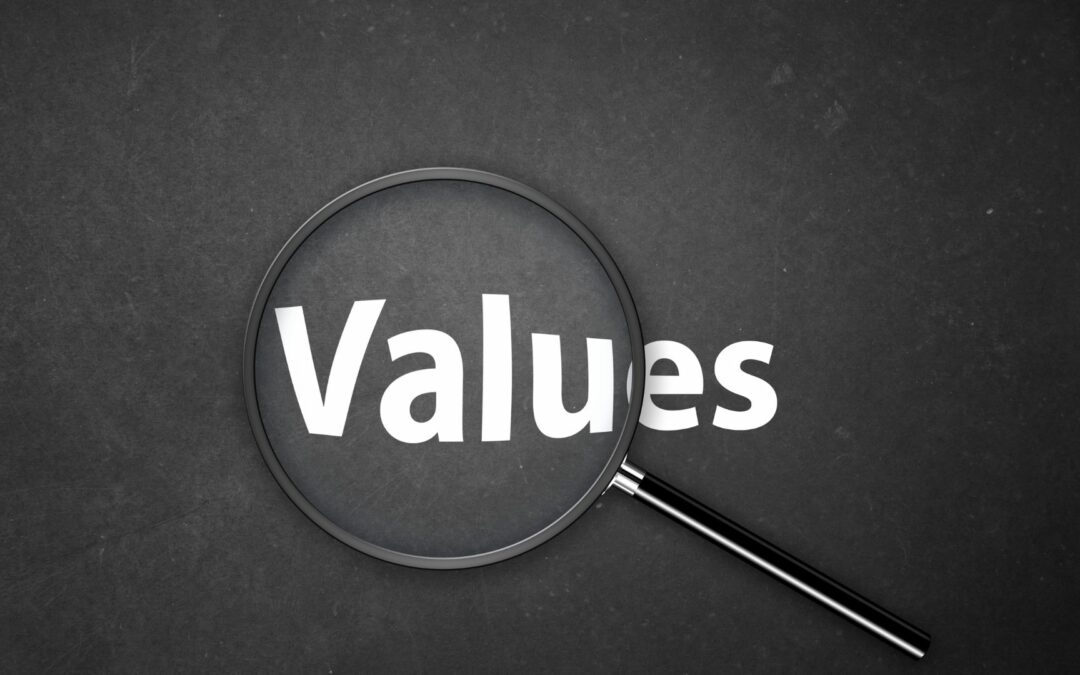Introduction
Most people don’t know how to identify their personal values. While it should be a part of education growing up, it is rarely addressed.
Your personal values are the core of what you cherish, love, and aspire to keep in your life. They are deeply personal and unique to you, forming the bedrock of your decisions, behaviors, and goals. Developing a well-thought-out value system is crucial for success in all areas of life. By understanding and organizing your personal values, you can better navigate choices, relationships, and life’s challenges. Let me guide you through how to identify your personal values and create a value system that supports your path to fulfillment and success.
Why Values Matter
Values are the guiding principles that shape your behavior and decisions. They reflect what is most important to you and influence your interactions with the world. A clearly defined value system helps you:
– Make consistent and meaningful decisions
– Respond effectively to challenges and opportunities
– Set and achieve personal and professional goals
– Maintain healthy relationships
– Live with integrity and authenticity
On a spiritual level, adhering to clear personal values creates strength of character, energetic stability, and improved protection from negative energies and spiritual influences.
When your actions align with your values, you experience a sense of purpose and satisfaction. Conversely, conflicts with your values can lead to stress and dissatisfaction. Therefore, identifying and prioritizing your values is a decisive step toward creating a balanced and fulfilling life.
Steps to Identify Your Personal Values

Step 1: Gather Your Materials
To start, gather a stack of index cards. Each card will represent a different value in your life. You’ll write one word on each card according to the following instructions. Remember, this process is dynamic, and you can always revise the order and content of your cards over time.
In the following three steps, you can start with ten cards for each category if that makes it easier. Once you have your initial list set up, you can continue to add cards routinely, such as when you journal or after a meditation.
Step 2: Identify Valued People
Think about the people who have significantly influenced your life. These can be family members, friends, mentors, or even public figures you admire. Include people who are alive, have passed away, or whom you have yet to meet. Write each person’s name on a separate card. Once you have your list, arrange the cards in order of importance, with the most cherished person on top.
This step can be difficult and bring up a lot of emotion. Know that that is natural and normal. Remember that this is your list and your values. Do not let guilt or what is expected guide you. You must be honest with yourself to have a meaningful list.
It can be tempting to lump people together, like the grandkids or my co-workers. That won’t help you in the long run. Please write each person’s name on a separate card.
Step 3: Identify Valued Things
Next, consider the things that you value in your life. These can be physical items, like your home or favorite book, or non-physical items, like talents, skills, or concepts such as freedom or creativity. Write each item on a separate card and arrange them in order of importance.
Feel free to be as creative and inclusive as you wish. You may add more items to your list as you move through your day, noticing what is significant to you for survival, enjoyment, sentimentality, or comfort. For instance, we have a power outage occasionally, and it hits home how important it is to have electricity and how much it is taken for granted.
Step 4: Identify Valued Activities
Think about the activities that bring you joy and fulfillment. These include hobbies, professional pursuits, or personal practices like meditation or exercise. Write each activity on a separate card and arrange them in order of importance.
Include activities you have on your bucket list, too. Since I was 17, I wanted to parachute out of an airplane. While traveling in New Zealand, I finally had the chance. Because it was on my list, it was easier to make the wish come true. It was a fantastic experience and has remained among my values as an enriching experience and one I would do again.
Step 5: Create a Unified Value List
Now, it’s time to combine your three categories into one cohesive value list. With your cards in order, face up, with the most significant item on the top, lay out your three stacks of cards (people, things, activities) side by side. Please start by selecting the most valuable item from the top three cards and set it aside face down. Continue this process, choosing the most valuable item from the remaining cards until all the cards are in one pile, with the most important value on top.
Note: You may have three activities, then one person, then two things, two more people, then one activity, etc. It doesn’t matter which category you are pulling from. It only matters which of the three visible words indicates the highest value.
Step 6: Add the “Consciousness and Existence” Card
Now that your personal values are in one stack create a card with the words “Consciousness and Existence.” This is the only card that will have two words. This card represents the fundamental components of your value system and will always remain at the top of your list. All other cards will support and align with this primary value.
Throughout history, philosophers have debated which comes first, consciousness or existence. It has yet to be determined. This is because without consciousness, you would not know of your existence, and without existence, you would not have anything to be conscious of. So, we will put them together on a card and leave them at the top of our values because, without these axiomatic concepts, there would be nothing.
Using Your Value System
Your value list is more than just a set of priorities; it’s a tool for guiding your life decisions and actions. Here’s how to effectively use your value system:
Decision Making
When facing a decision, refer to your values list. Ensure that your choices align with your highest values. This alignment will help you make decisions that support your long-term happiness and well-being.
Goal Setting
Set goals that reflect your top values. For example, if health is a top value, prioritize goals related to fitness and well-being. Aligning your goals with your values will increase your motivation and likelihood of success.
Daily Actions
Review your value list regularly and reflect on how well your daily actions align with your values. Are you spending your time and energy on what matters most to you? Make adjustments as needed to stay true to your values.
Personal Growth
Your value list is a living document that evolves as you grow. Regularly update it to reflect new insights and changes in your life. This practice will align you with your true self and help you navigate life’s changes with resilience and clarity.
Exercise: Reflecting on Your Values
Once you’ve created your value list, reflect on how well you live according to your values. Use the following prompts to guide your reflection:
Treatment of Valued People
– How do you treat the people named on your list?
– Are there any discrepancies or contradictions in your treatment of them? – Do you notice yourself moving away from certain people or gravitating to a new circle of friends?
– Are there any other changes you can make to reflect your values better? Allocation of Time
– How do you spend your time each day?
– Do you make time for activities and people that you claim are important? – What changes can you make to align your time with your values better?
Attention and Energy

– Where do you focus your attention and energy?
– Are you giving more attention to items lower on your list than those at the top? – How can you shift your focus to better align with your values?
Ongoing Evaluation
– Continue adding to your list as new values become apparent.
– Regularly update and refine your value system.
– Reflect on your progress and adjust to stay aligned with your values.
Enhancing Your Value List
As you evolve, your value list should reflect your growth. Consider adding values related to spiritual growth, such as:
– Spirit guides
– Clairvoyance or clairaudience
– Spiritual community
– Discernment and intuition
By expanding your value list to include spiritual and personal growth elements, you deepen your connection to your higher self and align more closely with your true purpose.
Overcoming Challenges
Switching gears to align with your values can create temporary road bumps as you and your loved ones adjust to the new lifestyle. However, once you are on that path, it becomes a superhighway to achieving your goals and dreams. Here are some tips for overcoming challenges:
Communicate Your Values
Share your value system with close friends and family. Explain why these values are essential and how you plan to live according to them. Open communication can help others understand and support your journey.
Stay Committed
Upholding your values requires courage and conviction. Maintain your boundaries, practice honesty, and stay true to your values, even when challenging. Remember that in doing so, you are demonstrating self-love and generating more self-respect.
Adapt and Adjust
Life is dynamic, and so are your values. Be flexible and willing to adapt your value list as you gain new insights and experiences. This adaptability ensures that your value system remains relevant and supports your growth.
Creating your values list will benefit your life in numerous ways. Being aware of your priorities will help you make better decisions, appreciate your relationships, ensure success, and strengthen your boundaries. As challenging as some steps are in this exercise, I encourage you to relax into the process and reap the rewards.



